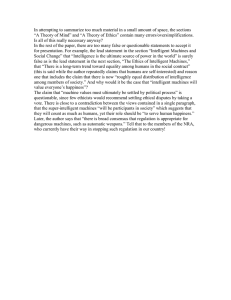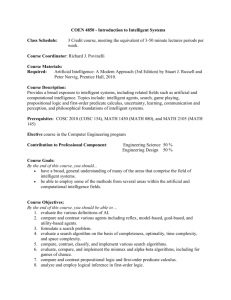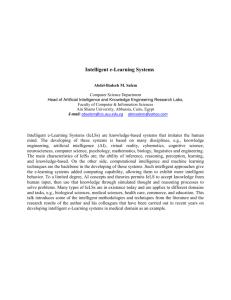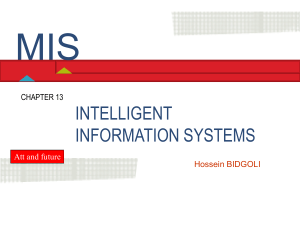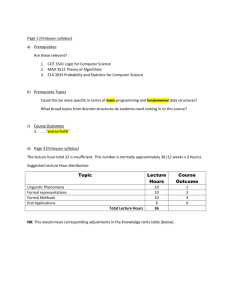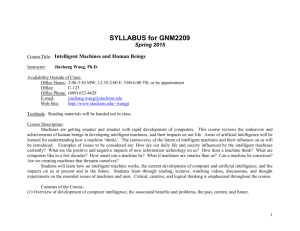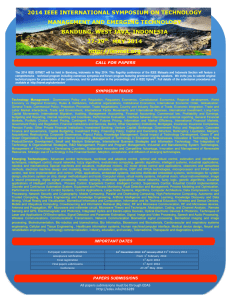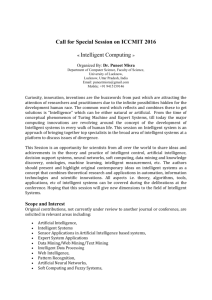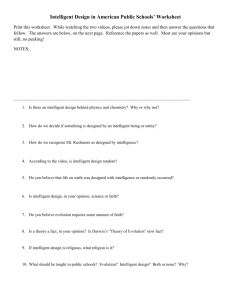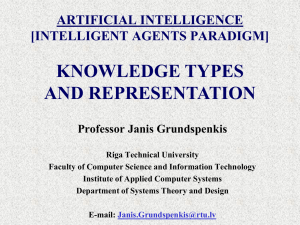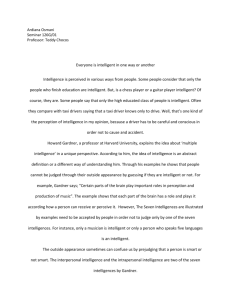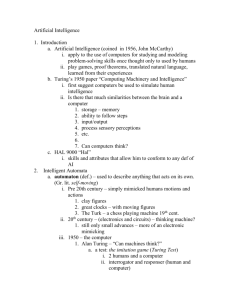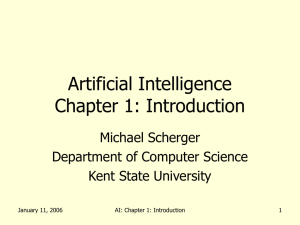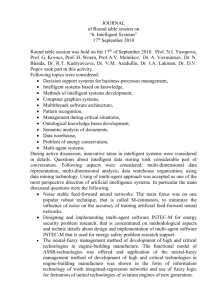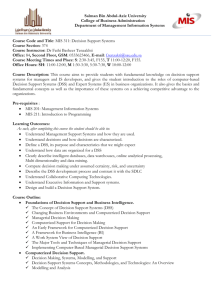Doc: Ingredients of an Intelligent Web
advertisement
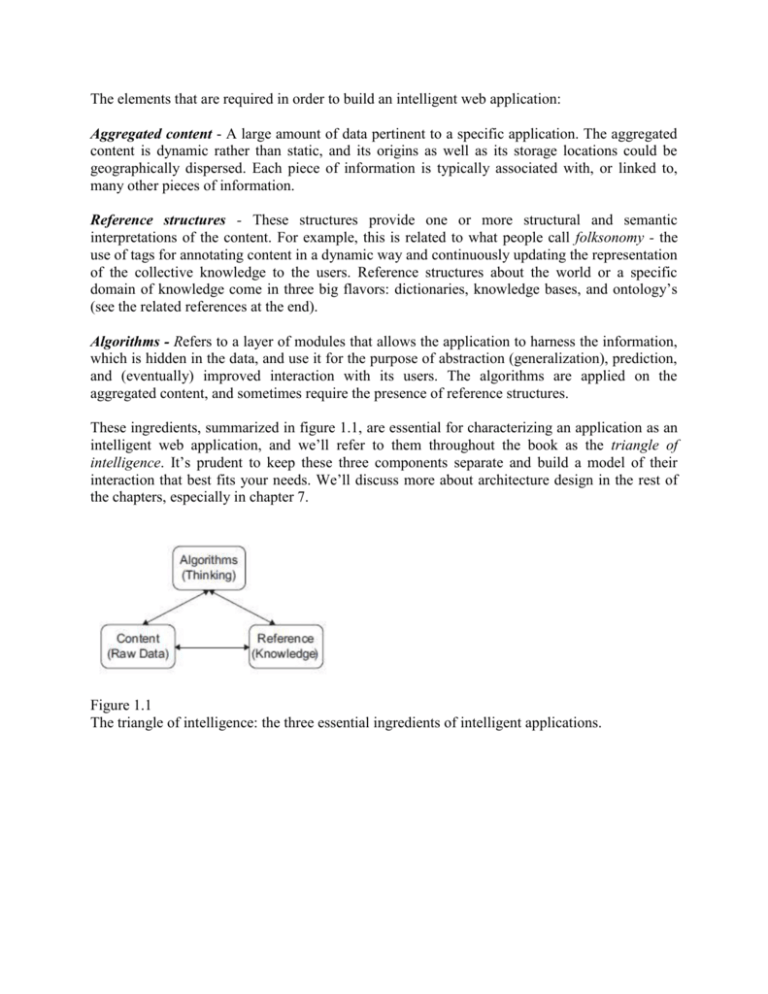
The elements that are required in order to build an intelligent web application: Aggregated content - A large amount of data pertinent to a specific application. The aggregated content is dynamic rather than static, and its origins as well as its storage locations could be geographically dispersed. Each piece of information is typically associated with, or linked to, many other pieces of information. Reference structures - These structures provide one or more structural and semantic interpretations of the content. For example, this is related to what people call folksonomy - the use of tags for annotating content in a dynamic way and continuously updating the representation of the collective knowledge to the users. Reference structures about the world or a specific domain of knowledge come in three big flavors: dictionaries, knowledge bases, and ontology’s (see the related references at the end). Algorithms - Refers to a layer of modules that allows the application to harness the information, which is hidden in the data, and use it for the purpose of abstraction (generalization), prediction, and (eventually) improved interaction with its users. The algorithms are applied on the aggregated content, and sometimes require the presence of reference structures. These ingredients, summarized in figure 1.1, are essential for characterizing an application as an intelligent web application, and we’ll refer to them throughout the book as the triangle of intelligence. It’s prudent to keep these three components separate and build a model of their interaction that best fits your needs. We’ll discuss more about architecture design in the rest of the chapters, especially in chapter 7. Figure 1.1 The triangle of intelligence: the three essential ingredients of intelligent applications.

